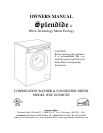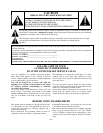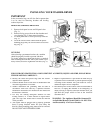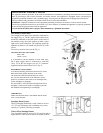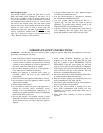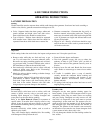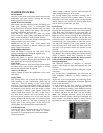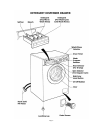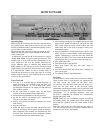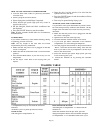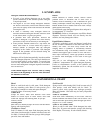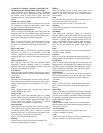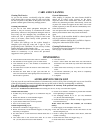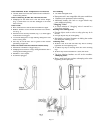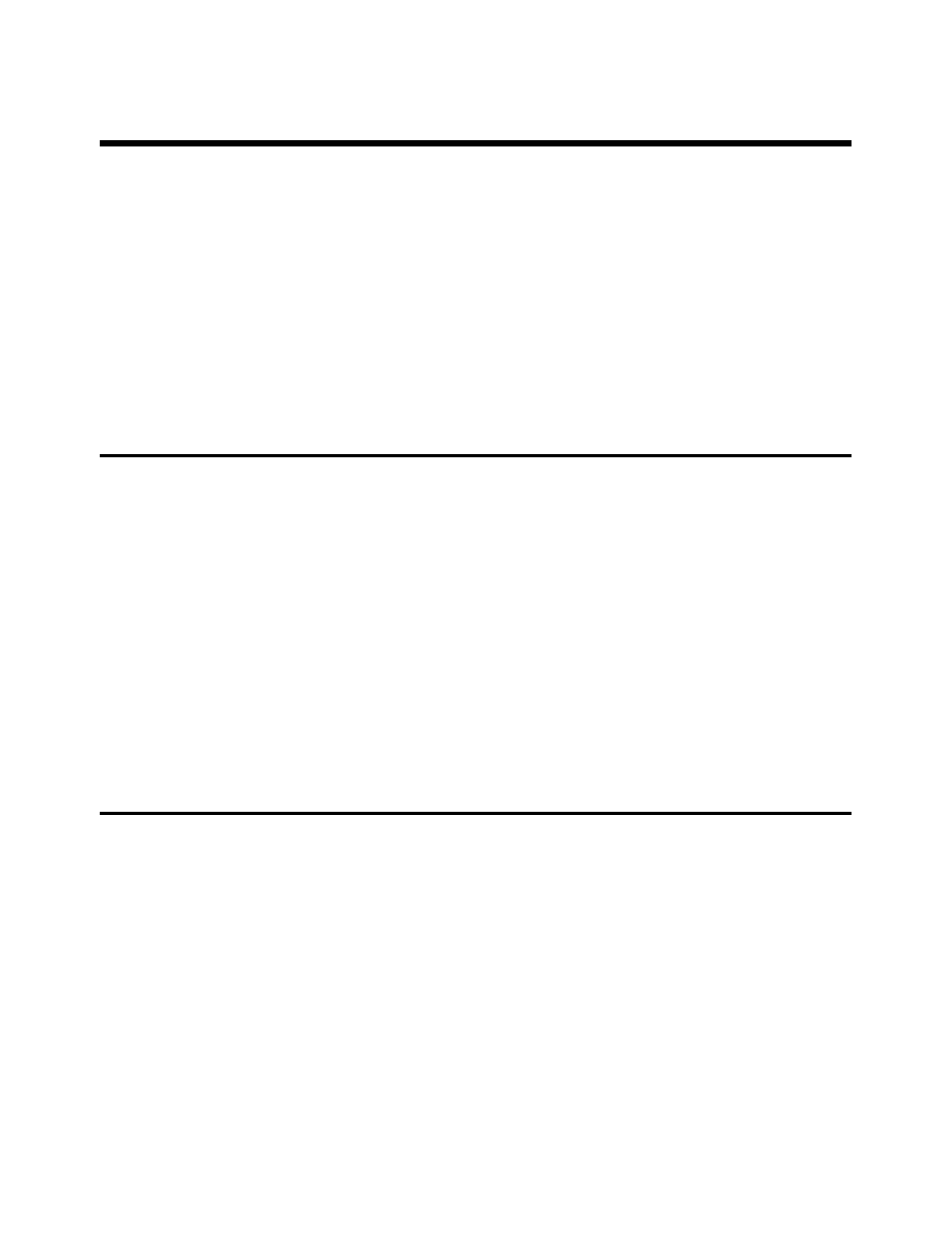
SAVE THESE INSTRUCTIONS
OPERATING INSTRUCTIONS
•
Color - Separate clothes into three groups: whites and
pastels medium and bright colors and dark colors.
Items which bleed color should be washed alone.
•
Type of fabrics - Delicate items should be separated
from sturdier items. Fabrics that shed lint should be
separated from those which shed none or attract lint.
Inspection
•
Garment constructions - Garments that fray easily or
that have unusual trim require gentle care. These gar-
ments may be washed in the front loader using the knit
cycle. If garments are fragile and delicate hand wash-
ing may be desirable.
•
Degree of soil - Heavily soiled items should be sepa-
rated from the rest of the wash to prevent transfer of
soil in the wash water.
LAUNDRY PREPARATION
Sorting
Clothes should be sorted to separate items which could damage other garments. Sort items into loads according to
similar colors, fabrics, garment construction and degrees of soil.
While sorting clothes into wash-loads, also inspect each garment to see if it requires special care.
Pre
-
treating
Pre-treat heavily soiled areas such as collars, cuffs and
centers of pillow cases by using a pre-wash spray, or
brushing liquid detergent or a laundry detergent and
water paste over the areas before washing.
Refer to the
Stain Removal
Chart
for treatment of
specific stains. If an entire item is heavily soiled or very
stained, it may be easier and more effective to pre-wash
the item before laundering than to pre-treat every spot.
Pre
-
Washing
Pre-wash excessively soiled clothes, such as work or
children's play clothes.
They often contain deeply embedded dirt. Pre-washing
with detergent will help loosen the soil.
Laundry Aids
Detergents are the most popular cleaning agents for
home laundry. Using too little detergent results in poor
washability, while using too much causes over sudsing
and poor rinsing. Detergents not only remove soil, but
also hold it in suspension in the wash water to prevent
redepositing it on the wash load. The amount to use de-
pends on wash load size, amount of soil, Water hardness
and detergent type. ALWAYS measure the amount of
detergent. The amount of suds formed is not necessarily
an indication of how much to use. Some detergents form
a great amount of suds, others only a few.
Use only detergents suitable for front loading washers for
best results.
Page 6
•
Remove stains while they are fresh and easy to get
out. Try cold water first to remove unknown stains.
Hot water sets stains containing protein such as blood,
egg, meat and milk. To remove difficult stains, refer to
the Stain Removal Chart at the end of this book.
•
Pre-treat heavily soiled areas such as collars cuffs and
centers of pillow cases. Refer to the "Pre-treating"
section for specific instructions.
•
Mend rips and tears before washing so further damage
is not done to garments.
•
Empty pockets. Objects left in pockets such as crayons
pens markers or tobacco crumbs may stain an entire
wash load. Paper tissues will shred leaving bits on
each item in the washer. Remove coins and other
foreign objects to prevent damage to the machine.
•
Fasten all hooks zippers and buttons.
•
Turn knit garments wrong side out to reduce the
tendency of knits to "pill". Fabric "pills" are balls of
fiber on the surface of the garment caused by wear or
friction.
•
Remove loose dirt and sand. Brush dirt from trouser
cuffs. Shake or vacuum rugs to remove loose surface
soil.
•
If buckle is washable place a scrap of material
securely around the ornament before washing and
drying to prevent scratching and damage to the
machine. Remove non-wash-able trims, buckles,
buttons and belts.
•
Tie strings, belts and apron sashes into bows to avoid
tangling during washing.



